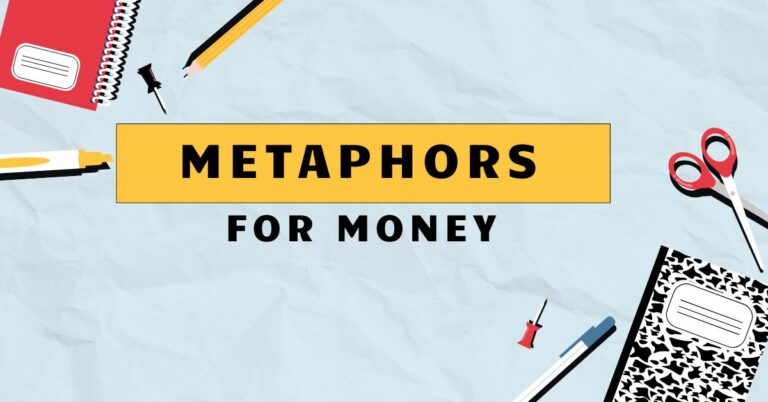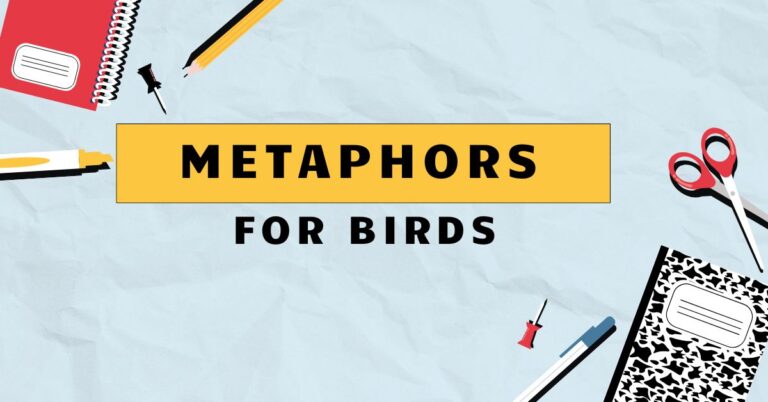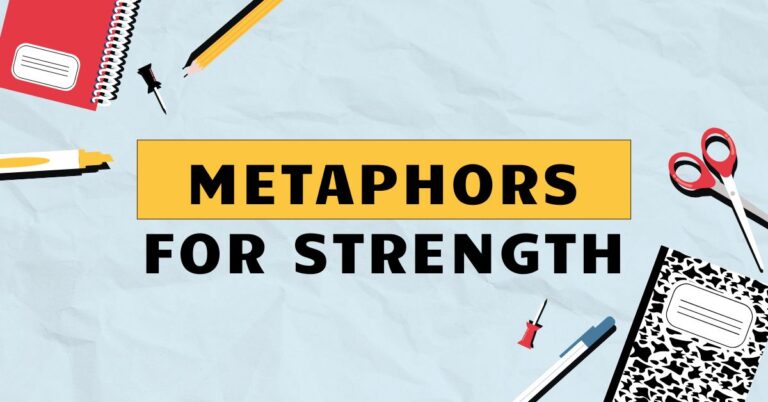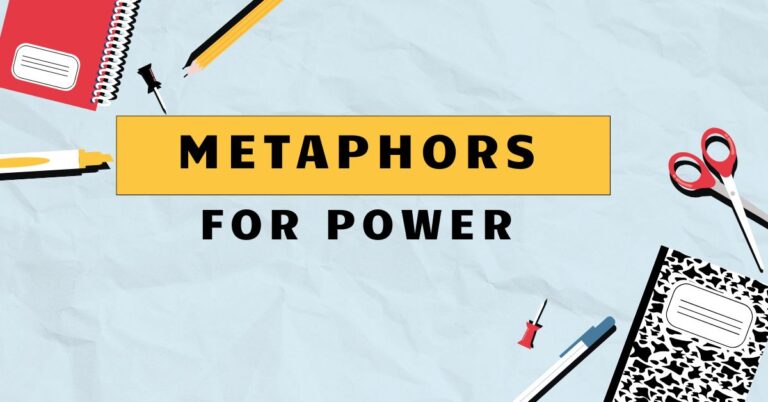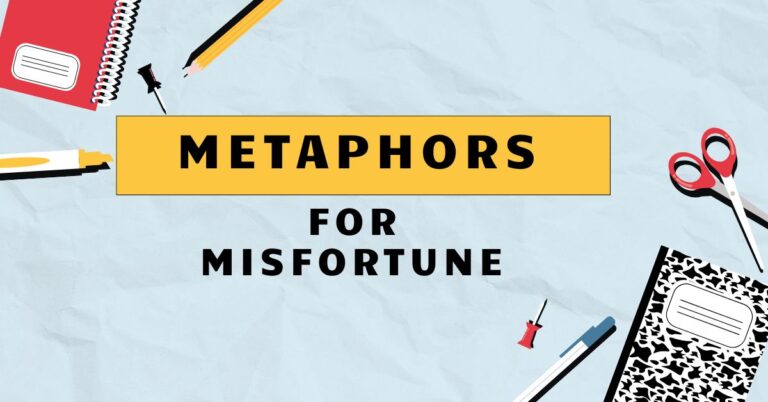31 Sports Metaphors: A Comprehensive Guide to Grammar and Usage
Metaphors are an integral part of the English language, enriching our communication by allowing us to understand abstract concepts through relatable comparisons. Sports, with its universal appeal and easily understood scenarios, provides a rich source of metaphorical language.
Understanding sports metaphors enhances comprehension, especially in contexts such as business, politics, and everyday conversations. This guide explores the grammar and usage of sports metaphors, providing a comprehensive overview for English language learners and native speakers alike.
Whether you’re aiming to improve your English proficiency or simply appreciate the art of language, this article will equip you with the knowledge to recognize, interpret, and use sports metaphors effectively.
This article is designed for English language learners, ESL/EFL students, teachers, and anyone interested in improving their understanding and use of figurative language. From basic definitions to advanced applications, we’ll cover everything you need to know about sports metaphors.
Table of Contents
- Introduction
- Definition of Metaphor and Sports Metaphors
- Structural Breakdown of Sports Metaphors
- Types of Sports Metaphors
- Examples of Sports Metaphors
- Usage Rules for Sports Metaphors
- Common Mistakes with Sports Metaphors
- Practice Exercises
- Advanced Topics in Sports Metaphors
- Frequently Asked Questions
- Conclusion
Definition of Metaphor and Sports Metaphors
Ametaphoris a figure of speech that directly compares two unrelated things, asserting that one thingisanother to create a vivid image or deeper understanding. Unlike similes, which use words like “like” or “as” to make comparisons, metaphors state the comparison directly.
The purpose of a metaphor is to transfer qualities or characteristics from one thing to another, offering new insight.
Asports metaphorapplies concepts, terms, or scenarios from sports to describe situations in other domains, such as business, politics, or personal relationships. These metaphors leverage the widely understood dynamics of sports – competition, teamwork, strategy, and victory – to make abstract ideas more concrete and relatable.
The use of sports metaphors can add color, emphasis, and a sense of urgency to communication, making it more engaging for the audience. For example, saying a company is “playing hardball” suggests aggressive and uncompromising tactics, drawing a parallel to the intense competition in baseball.
Structural Breakdown of Sports Metaphors
Understanding the structure of sports metaphors involves recognizing the source and target domains. Thesource domainis the sport itself, including its rules, players, and strategies.
Thetarget domainis the area where the metaphor is applied, such as business, politics, or personal life. The effectiveness of a sports metaphor depends on how clearly the audience understands the connection between these two domains.
Sports metaphors often rely on specific vocabulary related to the sport. For instance, in a business context, using the term “touchdown” (from American football) would imply a significant achievement or success.
Similarly, “home run” (from baseball) might signify a particularly successful product launch or business deal. The structural effectiveness also lies in the implied qualities transferred from the sport to the target domain.
Qualities like teamwork, strategy, competition, and perseverance are commonly conveyed through sports metaphors.
Consider the metaphor “He’s a team player.” Here, the source domain is team sports, and the target domain is typically a workplace or group setting. The metaphor implies that the individual is cooperative, supportive, and willing to contribute to the collective goal, drawing a direct parallel to the behavior of a player on a sports team.
Types of Sports Metaphors
Sports metaphors are diverse, drawing from a wide range of sports. Different sports offer unique scenarios and terminology that can be applied metaphorically.
Here are some common categories:
Baseball Metaphors
Baseball metaphors are frequently used in business and politics to describe success, failure, and strategic positioning. Terms like “home run,” “strike out,” “cover all the bases,” and “out of left field” are common examples.
These metaphors often convey a sense of progress, risk, and unexpected events.
Basketball Metaphors
Basketball metaphors emphasize teamwork, strategy, and individual performance. Phrases like “slam dunk,” “full-court press,” “nothing but net,” and “ball is in your court” are used to describe situations requiring precision, pressure, and decision-making.
These metaphors often highlight the dynamic and fast-paced nature of the target domain.
Football Metaphors
Football metaphors are known for their emphasis on strategy, teamwork, and achieving goals. Terms like “touchdown,” “game plan,” “quarterback,” “move the goalposts,” and “blitz” are used to describe planning, leadership, and aggressive tactics.
These metaphors are especially common in business and political contexts where long-term strategies and decisive actions are important.
Boxing Metaphors
Boxing metaphors highlight resilience, competition, and overcoming challenges. Phrases like “knockout,” “below the belt,” “take a hit,” “down for the count,” and “roll with the punches” describe facing adversity, unethical behavior, and the ability to recover from setbacks.
These metaphors often convey a sense of struggle and determination.
General Sports Metaphors
General sports metaphors encompass terms and concepts applicable across various sports, focusing on competition, effort, and achievement. Phrases like “level playing field,” “raise the bar,” “jump through hoops,” “neck and neck,” and “ahead of the game” are used to describe fairness, standards, challenges, close competition, and leadership.
These metaphors are versatile and can be applied to a wide range of situations.
Examples of Sports Metaphors
The following tables provide extensive examples of sports metaphors, categorized by their sport of origin. Each example includes the metaphor, its meaning, and an example sentence to illustrate its usage.
Baseball Metaphor Examples
Baseball metaphors are used extensively to describe business situations. Here are some examples:
| Metaphor | Meaning | Example Sentence |
|---|---|---|
| Home run | A major success or achievement | The new product launch was a home run for the company. |
| Strike out | To fail or be unsuccessful | He struck out in his attempt to negotiate a better deal. |
| Cover all the bases | To prepare for all possibilities | We need to cover all the bases before launching the campaign. |
| Out of left field | Unexpected or surprising | His suggestion came out of left field, but it turned out to be brilliant. |
| Step up to the plate | To take responsibility or face a challenge | It’s time for you to step up to the plate and lead the team. |
| Ballpark figure | An approximate or estimated number | Can you give me a ballpark figure for the project cost? |
| Get to first base | To make a small initial achievement | We need to get to first base before we can start planning the next phase. |
| In the ballpark | To be close to the target or goal | Your estimate is in the ballpark, but we need more precise numbers. |
| Swing for the fences | To try to achieve something ambitious | We’re going to swing for the fences with this new marketing strategy. |
| Three strikes, you’re out | A final warning or last chance | He’s had two warnings already; this is his “three strikes, you’re out” moment. |
| Throw a curveball | To present an unexpected problem or challenge | The new regulations threw a curveball to our business plans. |
| Grand slam | A complete success, often involving multiple components | Winning all four awards was a grand slam for the film. |
| On deck | Next in line or waiting to be used | The next project on deck is the expansion into the Asian market. |
| Safe at home | Secure or protected from risk | After the merger, the employees felt safe at home in their new roles. |
| Double play | Achieving two goals or results with one action | The acquisition was a double play, increasing our market share and reducing competition. |
| Bottom of the ninth | The final stage of a process or situation | We’re in the bottom of the ninth, so we need to make our last effort count. |
| Go to bat for someone | To support or defend someone | I’m willing to go to bat for you if you need help with the presentation. |
| Take a rain check | To postpone something to a later date | Can we take a rain check on that meeting? I have another appointment. |
| Foul ball | An unsuccessful or irrelevant attempt | His argument was a foul ball and didn’t address the main issue. |
| Caught off base | Unprepared or caught by surprise | The company was caught off base by the sudden market shift. |
| Cleanup hitter | The most effective or important person in a team or group | She’s the cleanup hitter on the sales team, always closing the biggest deals. |
| Squeeze play | A high-risk, high-reward strategy | The company executed a squeeze play to gain control of the market. |
| Stealing bases | Gaining an advantage through clever or risky means | They were stealing bases by undercutting their competitors’ prices. |
| Full count | A situation of high tension or uncertainty | The negotiations were at full count, with everything hanging in the balance. |
| Get a walk | To achieve something without much effort | He essentially got a walk into the leadership position due to his family connections. |
| Beanball | A deliberate attempt to harm or intimidate someone | His personal attacks were a beanball aimed at discrediting his opponent. |
| Pickoff | To eliminate or remove something quickly and efficiently | The CEO picked off several underperforming divisions to streamline the company. |
| Designated hitter | A person brought in for a specific task or skill | She was brought in as a designated hitter to fix the marketing campaign. |
Basketball Metaphor Examples
Basketball metaphors are often used to describe fast-paced and dynamic situations. Here are some examples:
| Metaphor | Meaning | Example Sentence |
|---|---|---|
| Slam dunk | An easy and certain success | The new marketing campaign was a slam dunk. |
| Full-court press | Intense and aggressive effort | The company put on a full-court press to meet the deadline. |
| Nothing but net | Perfect or flawless | Her presentation was nothing but net, receiving high praise from everyone. |
| Ball is in your court | It’s your turn to take action | I’ve presented my proposal; now the ball is in your court. |
| Dribble the ball | To cautiously move forward or stall | They’re just dribbling the ball, waiting for the right opportunity. |
| Alley-oop | A cooperative effort leading to success | The partnership created an alley-oop that boosted both companies’ sales. |
| Fast break | A quick and decisive action | The company executed a fast break to seize the new market opportunity. |
| Three-pointer | A high-impact achievement | Landing that major client was a three-pointer for the sales team. |
| Zone defense | A strategy to protect a specific area or interest | The government implemented a zone defense to protect local industries. |
| Pick and roll | A coordinated maneuver to gain an advantage | Their marketing strategy was a pick and roll, combining social media and email campaigns. |
| Air ball | A complete failure or miss | His attempt to negotiate the deal was an air ball. |
| Rebound | To recover from a setback | After the initial failure, the company managed to rebound and launch a successful product. |
| Assist | To help someone achieve success | Her research provided the assist that led to the breakthrough. |
| Benchwarmer | Someone who is not actively contributing | He felt like a benchwarmer in the project, not being given any important tasks. |
| Full timeout | A pause to reassess and strategize | The team called a full timeout to discuss their approach. |
| Traveling | Moving forward without a solid foundation | His business plan was traveling because it lacked market research. |
| Double dribble | Making a mistake that invalidates progress | The company made a double dribble by launching two conflicting products. |
| In the paint | Being in a vulnerable or exposed position | The company was in the paint after the negative publicity. |
| Key player | An essential or important person | She is a key player in the development of the new software. |
| Jump shot | A calculated risk | Investing in the startup was a jump shot, but it paid off. |
| Buzzer beater | A last-minute success | They closed the deal with a buzzer beater just before the deadline. |
| Sixth man | A strong supporting player | He is the sixth man on the team, always ready to step up when needed. |
| Layup | An easy and almost guaranteed success | The new contract was a layup for the company. |
| Swish | A perfect and effortless success | Her presentation was a swish, impressing the entire board. |
| Zone in | To focus intensely | He needed to zone in to finish the project on time. |
| Pickpocket | To steal an idea or advantage subtly | They pickpocketed our marketing strategy. |
| Baseline | A fundamental starting point | We need to establish a baseline before we can measure progress. |
Football Metaphor Examples
Football metaphors are commonly used to describe strategic planning and execution. Here are some examples:
| Metaphor | Meaning | Example Sentence |
|---|---|---|
| Touchdown | A significant achievement or success | Securing the new contract was a touchdown for the sales team. |
| Game plan | A strategy or plan of action | We need to develop a solid game plan for the upcoming quarter. |
| Quarterback | A leader or decision-maker | She is the quarterback of the project, coordinating all the tasks. |
| Move the goalposts | To change the rules or requirements unfairly | They keep moving the goalposts, making it impossible to meet the targets. |
| Blitz | An aggressive and sudden attack | The marketing team launched a blitz campaign to increase brand awareness. |
| Hail Mary | A last-ditch effort with little chance of success | Filing the lawsuit was a Hail Mary, but they had nothing to lose. |
| End zone | The final goal or objective | We’re finally in the end zone after months of hard work. |
| Red zone | A critical or high-pressure situation | The negotiations are now in the red zone, requiring careful handling. |
| Forward pass | Taking a risk to advance progress | The new strategy was a forward pass, but it paid off handsomely. |
| Monday morning quarterback | Someone who criticizes decisions after the fact | He’s always a Monday morning quarterback, criticizing every decision I make. |
| Fumble | To make a mistake or lose an opportunity | He fumbled the presentation, losing the potential client. |
| Sideline | To exclude or remove from active participation | He was sidelined due to his poor performance. |
| Huddle | To gather and strategize | The team huddled to discuss the next steps. |
| Fullback | Someone who provides support and protection | She acts as the fullback, shielding the CEO from unnecessary distractions. |
| Holding | Impeding progress or preventing action | The regulatory delays are holding up the project. |
| Interception | To seize an opportunity or idea from someone else | The competitor intercepted our marketing campaign. |
| Offense | Taking proactive steps to achieve a goal | The company is going on the offense to capture more market share. |
| Defense | Protecting against threats or challenges | The legal team is playing defense to protect the company’s interests. |
| Punt | To give up or postpone a decision | They decided to punt the project to the next quarter. |
| Sack | To stop or prevent someone from achieving a goal | The new regulations sacked their expansion plans. |
| Audible | To change a plan or strategy at the last minute | They called an audible when they saw the competitor’s strategy. |
| Game changer | Something that significantly alters the course of events | The new technology was a game changer for the industry. |
| Line of scrimmage | The starting point for negotiations or competition | We need to establish our position at the line of scrimmage. |
| Instant replay | A detailed review of a past event | Let’s have an instant replay to analyze what went wrong. |
| Fair catch | A safe and secure outcome | They made a fair catch by securing the contract without any major concessions. |
| Blind side | To attack or surprise someone unexpectedly | The scandal hit the CEO from the blind side. |
| Draw play | A deceptive maneuver | The company used a draw play to lure the competitor into a trap. |
Usage Rules for Sports Metaphors
Using sports metaphors effectively requires understanding certain rules and guidelines. First, consider youraudience.
If your audience is unfamiliar with a particular sport, the metaphor may be lost on them or even confusing. It’s crucial to choose metaphors that are widely understood or to provide context when using more obscure references.
Second, ensure themetaphor is appropriatefor the context. A boxing metaphor, with its connotations of conflict and struggle, might not be suitable for a situation that requires collaboration and harmony.
Similarly, a baseball metaphor about success might sound out of place if the situation is about managing risk.
Consistencyis also important. Once you establish a sports theme, maintain it throughout your communication.
Mixing metaphors from different sports can create confusion and weaken your message. If you start with a football metaphor, stick to football terminology to ensure clarity.
Avoidoverusingsports metaphors. While they can be effective in moderation, using too many can make your language sound cliché or forced.
A well-placed metaphor is more impactful than a barrage of them. Choose metaphors that add genuine value and enhance understanding, rather than simply filling space.
Finally, be mindful ofcultural differences. Some sports are more popular in certain regions, and metaphors derived from those sports may not resonate with audiences from other cultures.
For instance, American football metaphors might not be as effective in countries where football refers to soccer.
Common Mistakes with Sports Metaphors
Several common mistakes can undermine the effectiveness of sports metaphors. One frequent error ismixing metaphorsfrom different sports.
This creates a confusing and disjointed image, weakening the overall impact.
Another mistake is usingoverly complex or obscure metaphorsthat the audience doesn’t understand. If the metaphor requires extensive explanation, it defeats its purpose of quickly conveying a concept.
Simpler, more widely recognized metaphors are generally more effective.
Inappropriate applicationof metaphors is another common error. Using a metaphor that doesn’t fit the situation can create a disconnect and undermine your credibility.
Consider the connotations of the metaphor and ensure they align with the message you’re trying to convey.
Finally,overuseof sports metaphors can make your language sound cliché and unoriginal. Use them sparingly and strategically to maximize their impact.
A well-placed metaphor is far more effective than a constant stream of them.
Here’s a table illustrating common mistakes and corrections:
| Incorrect | Correct | Explanation |
|---|---|---|
| “We need to strike while the iron is hot and run with the ball.” | “We need to strike while the iron is hot.” OR “We need to run with the ball.” | Mixing metaphors from blacksmithing and football creates confusion. |
| “Let’s go for the hat trick and cover all the bases.” | “Let’s cover all the bases.” | Mixing metaphors from hockey and baseball is confusing. |
| “He dropped the ball on that one, but it was a total Hail Mary anyway.” | “He dropped the ball on that one.” | While both are football metaphors, combining a common mistake with a desperate attempt is awkward. |
| “Our new strategy is a slam dunk, but we need to keep our eye on the ball.” | “Our new strategy is a slam dunk.” | Mixing metaphors from basketball and general sports clutters the meaning. |
| “We’re going to take a Hail Mary and swing for the fences.” | “We’re going to swing for the fences.” | Combining metaphors from football and baseball weakens the message. |
Practice Exercises
Test your understanding of sports metaphors with these exercises. Identify the meaning of each metaphor in the following sentences.
Exercise 1
| Question | Answer |
|---|---|
| 1. The company is really stepping up to the plate with their new product line. | Taking responsibility and facing a challenge. |
| 2. After the merger, the company felt like they were playing on a level playing field. | Having a fair and equal opportunity. |
| 3. The negotiations went into the bottom of the ninth, with everything on the line. | The final stage of a process, with high stakes. |
| 4. She is the quarterback of the marketing team, coordinating all the campaigns. | The leader and decision-maker. |
| 5. His presentation was a slam dunk, impressing everyone in the room. | An easy and certain success. |
| 6. They decided to punt the project to the next quarter due to budget constraints. | To give up or postpone a decision. |
| 7. The new technology was a game changer for the entire industry. | Something that significantly alters the course of events. |
| 8. We need to cover all the bases before launching the new campaign. | To prepare for all possibilities. |
| 9. The ball is in your court now; it’s time for you to make a decision. | It’s your turn to take action. |
| 10. He went to bat for his colleague, defending him against the accusations. | To support or defend someone. |
Exercise 2
Fill in the blanks with the appropriate sports metaphor from the list below:
(Hail Mary, home run, move the goalposts, strike out, full-court press, game plan, below the belt, level playing field, out of left field, raise the bar)
| Question | Answer |
|---|---|
| 1. The company’s new marketing strategy was a ______, resulting in record sales. | home run |
| 2. They kept ______ by changing the project requirements after we had already started. | move the goalposts |
| 3. His comment about her appearance was definitely ______. | below the belt |
| 4. We need a solid ______ to ensure we achieve our goals this quarter. | game plan |
| 5. The new regulations created a ______ for all businesses in the industry. | level playing field |
| 6. The company launched a ______ to meet the increased demand. | full-court press |
| 7. His suggestion came completely ______, but it turned out to be a brilliant idea. | out of left field |
| 8. They decided to try a ______, even though the chances of success were slim. | Hail Mary |
| 9. He tried to negotiate a better deal, but he ______. | strike out |
| 10. To stay competitive, we need to constantly ______. | raise the bar |
Advanced Topics in Sports Metaphors
For advanced learners, exploring the nuances of sports metaphors can further enhance their understanding and usage. One advanced topic is thecultural specificityof sports metaphors.
Different cultures have different sporting traditions, and metaphors derived from these sports may not translate well across cultures. Understanding these cultural nuances can help you use metaphors more effectively in international contexts.
Another advanced topic is theevolution of sports metaphorsover time. As sports evolve, so do the metaphors associated with them.
New terms and concepts emerge, and existing metaphors take on new meanings. Staying up-to-date with these changes can help you keep your language fresh and relevant.
Exploring thepsychological impactof sports metaphors is another advanced area. Sports metaphors can evoke strong emotions and associations, influencing how people perceive and respond to a message.
Understanding these psychological effects can help you use metaphors more persuasively.
Finally, analyzing the use of sports metaphors in literature and rhetoric can provide deeper insights into their power and effectiveness. Examining how skilled writers and speakers use sports metaphors can inspire you to incorporate them more creatively and strategically into your own communication.
Frequently Asked Questions
- What is the difference between a metaphor and a simile?
A metaphor directly compares two unrelated things, stating that one thing is another (e.g., “He is a lion”). A simile, on the other hand, uses “like” or “as” to make a comparison (e.g., “He is as brave as a lion”). Metaphors are more assertive and create a stronger image.
- Why are sports metaphors so commonly used?
Sports are widely understood and universally relatable, making sports metaphors an effective way to convey abstract concepts in a concrete and engaging manner. The themes of competition, teamwork, and achievement resonate with many people.
- How can I improve my understanding of sports metaphors?
To improve your understanding, expose yourself to a variety of contexts where sports metaphors are used, such as business articles, political speeches, and everyday conversations. Pay attention to the specific sports referenced and the qualities they convey. Reading books and articles about sports can also help build your familiarity with sports terminology.
- Are there any sports metaphors I should avoid using?
Avoid using metaphors that are overly complex, obscure, or culturally specific if your audience may not understand them. Also, be cautious of metaphors that carry negative connotations or could be offensive. Always consider your audience and the context of your communication.
- Can sports metaphors be used in formal writing?
Yes, but use them sparingly and judiciously. In formal writing, clarity and precision are paramount. Ensure that the metaphor enhances understanding rather than detracting from it. Avoid clichés and overly casual language.
- How do I create my own sports metaphors?
To create your own metaphors, start by identifying the concept you want to convey. Then, think about a sport that shares similar qualities or dynamics. Consider the terminology and scenarios from that sport that could be applied metaphorically to the concept. Ensure that the metaphor is clear, relevant, and appropriate for your audience.
- What role does context play in understanding sports metaphors?
Context is crucial for understanding sports metaphors because it provides the necessary clues to interpret their meaning. The surrounding sentences, the overall topic, and the audience’s background knowledge all contribute to how a metaphor is understood. Without context, a metaphor can be easily misinterpreted.
- How can I avoid misusing sports metaphors?
To avoid misusing sports metaphors, double-check that the metaphor aligns with the message you’re trying to convey and that it is appropriate for your audience. Avoid mixing metaphors from different sports and be mindful of cultural differences. If you’re unsure about a metaphor, err on the side of caution and choose a more direct form of expression.
- Are some sports more commonly used for metaphors than others?
Yes, some sports like baseball, basketball, and football are more commonly used for metaphors due to their widespread popularity and easily understood dynamics. These sports offer a rich source of terminology and scenarios that can be applied to various contexts.
- How do I know if a sports metaphor is effective?
An effective sports metaphor should enhance understanding, add color
and emphasis to your message, and resonate with your audience. If the metaphor is clear, relevant, and well-received, it is likely effective. Solicit feedback from others to gauge their understanding and reaction to your metaphors.
Conclusion
Sports metaphors are a powerful tool for enriching communication and making abstract ideas more relatable. By understanding the structure, types, and usage rules of sports metaphors, English language learners and native speakers alike can enhance their comprehension and expression.
Whether you’re aiming to improve your English proficiency or simply appreciate the art of language, mastering sports metaphors will undoubtedly add a new dimension to your communication skills. Remember to consider your audience, choose appropriate metaphors, and avoid common mistakes to maximize the impact of your message.
With practice and attention to detail, you can effectively leverage the power of sports metaphors to convey your ideas with clarity, color, and conviction.


